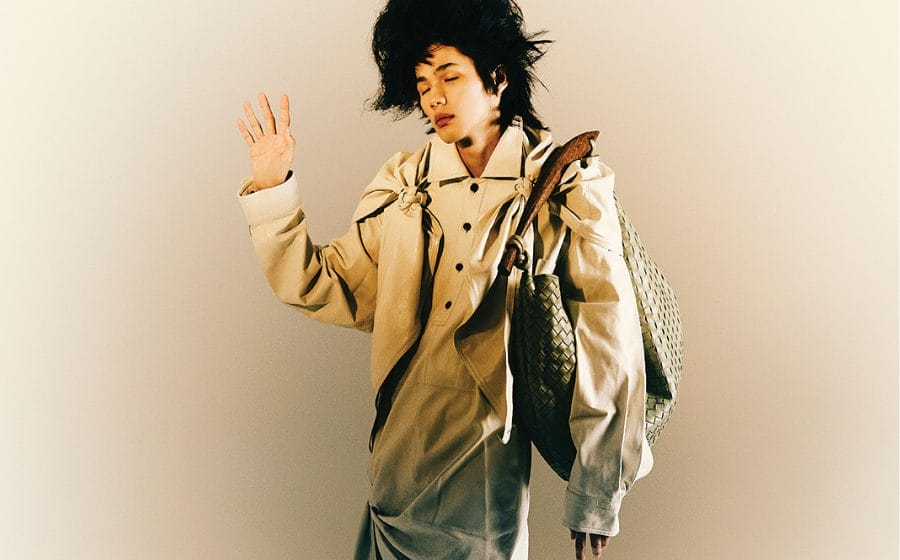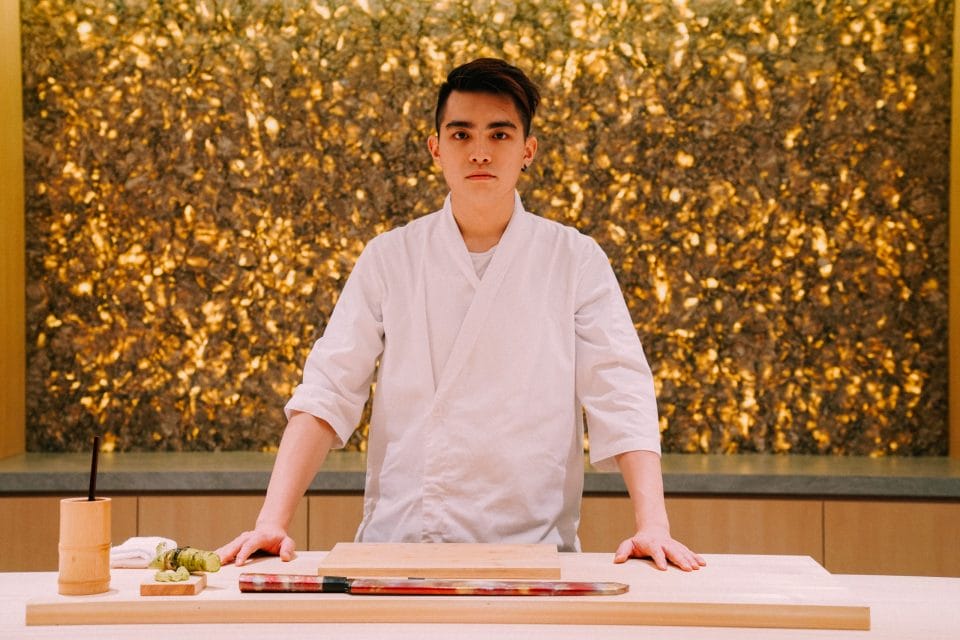
Executive Chef Brandon Low brings an exquisite omakase menu that brings one on a culinary odyssey that blends artistry, flavours and passion for Kyoto cuisine together — without skipping on tradition.
Situated along Telok Ayer street is Ikkoten Omakase, an omakase restaurant hidden alongside its sister establishment, Kura Oyster & Highball. Ikkoten is an innovative Japanese Kaiseiki-style omakase restaurant presenting rich yet clean-tasting flavors of traditional Kyoto cuisine.
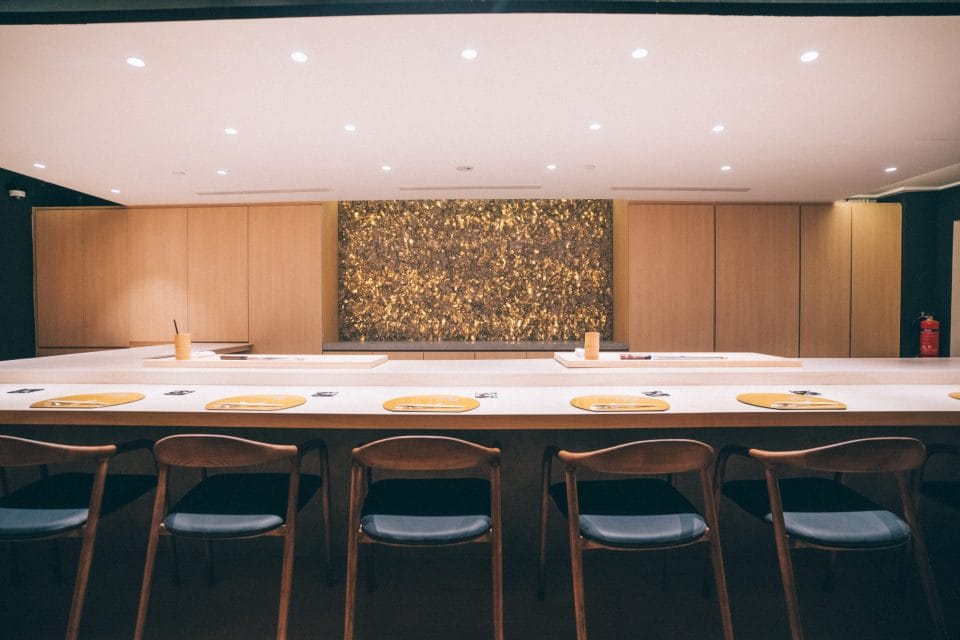 Walking through a non-discreet wall where Ikkoten Omakase is on the left, guests are transported into an intimate 10-seater restaurant furnished with fresh-toned wood and golden-accented interior. That same feeling is emanated by Executive Chef, Brandon Low’s warm and friendly presence.
Walking through a non-discreet wall where Ikkoten Omakase is on the left, guests are transported into an intimate 10-seater restaurant furnished with fresh-toned wood and golden-accented interior. That same feeling is emanated by Executive Chef, Brandon Low’s warm and friendly presence.
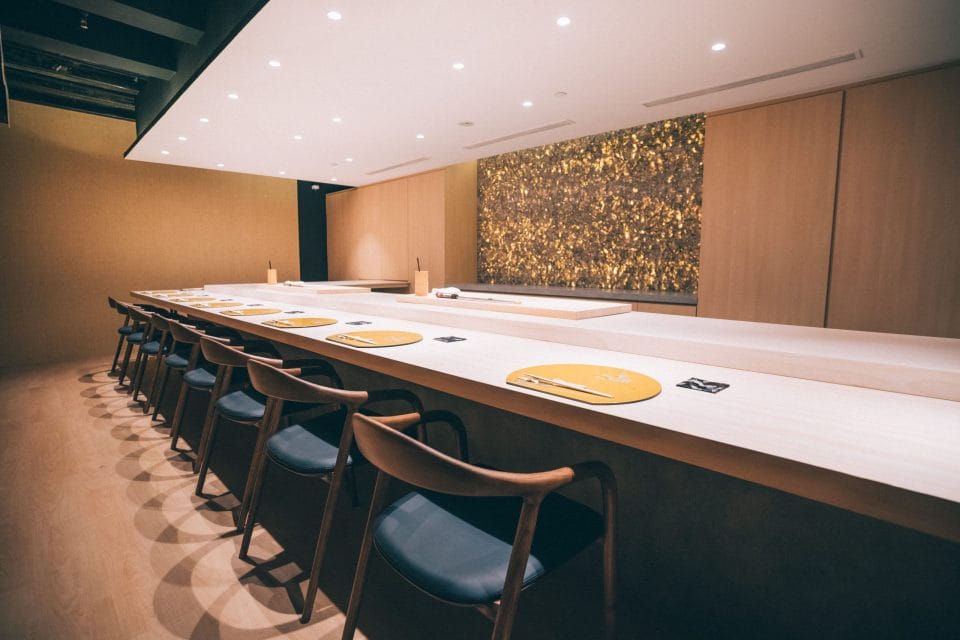 Behind his personable aura, Low embodies a spirit of tenacity. The Executive Chef has been married to Japanese cuisine since he was 16 years-old, working and studying at the same time in an izakaya with his younger brother due to financial issues back home. He is full of good intent and wants the best for those around him — especially his customers and with his small crew of two. Chef Low actively interacts with his customers, soughting for feedback on the food and asking them about their favourite dishes. Simple gestures like this proves that an omakase experience goes beyond mere the dining experience — it weaves together a tapestry of art, culture, and heartfelt intention.
Behind his personable aura, Low embodies a spirit of tenacity. The Executive Chef has been married to Japanese cuisine since he was 16 years-old, working and studying at the same time in an izakaya with his younger brother due to financial issues back home. He is full of good intent and wants the best for those around him — especially his customers and with his small crew of two. Chef Low actively interacts with his customers, soughting for feedback on the food and asking them about their favourite dishes. Simple gestures like this proves that an omakase experience goes beyond mere the dining experience — it weaves together a tapestry of art, culture, and heartfelt intention.
 In an interview with Men’s Folio, Chef Low’s eagerness to share his knowledge and passion shone through, leaving guests yearning to learn more about the intricacies of Kyoto kaiseki cuisine. His humility and down-to-earth nature further enhanced the experience, emphasising that an omakase is not just about the food—it’s about the chef’s dedication and the opportunity for guests to embrace something truly exceptional.
In an interview with Men’s Folio, Chef Low’s eagerness to share his knowledge and passion shone through, leaving guests yearning to learn more about the intricacies of Kyoto kaiseki cuisine. His humility and down-to-earth nature further enhanced the experience, emphasising that an omakase is not just about the food—it’s about the chef’s dedication and the opportunity for guests to embrace something truly exceptional.
Hi Brandon! It’s a pleasure to meet you. As a Singaporean omakase chef specialising in Japanese kaiseki cuisine, could you share a bit about your background and how you developed a passion for this unique culinary art form?
I started working from a very young age at an izakaya due to my family’s financial issues. I was juggling between work and school as a server before my little brother joined me. When I was 16 years old, I barely passed my ‘N’ levels — not because I did not want to study but I just had no time to because I would rush from school to the izakaya for work. I joined the same izakaya again after National Service, but their concept changed and this provoked the thought of trying something else. It brought me to Japanese fine dining because I love the fact that one ingredient can create ten different dishes varying from its textures and base that still go well with other foods. This was the moment where my curiosity piqued and I found the passion to learn.
 How did you meet your co-founder Eric Liew and how has he supported you in this venture?
How did you meet your co-founder Eric Liew and how has he supported you in this venture?
Eric used to patronise at my previous workplace and asked me where I see myself in ten years time. I told him about my career and background and how I would like to open up a new restaurant if given the capital and support by others. He was keen and gave me a shot by getting me to do private fine dining for him. His friends and family were invited to come to try my fine dining cuisine and I can confidently say that the majority of them liked my omakase. That was when the idea of trying to open up an omakase restaurant together came to mind, which I was agreeable to.
What inspired you to co-found Ikkoten Omakase, and how do you integrate your personality while still respecting the traditions of Kyoto kaiseki?
Kyoto cuisine is done in a traditional style where food is plated very differently. It is a style I still respect but wanted to modify, as I believe that visuals of food plays a role in the flavours. If it looks good at first glance, it would be a bonus for customers to eat and taste how delicious the food is simultaneously. I like to use the highest quality of ingredients, so if something goes bad I will not serve it that day. Several rounds of quality checks (what we call a ‘QC’), are done during the preparation time before I serve the food.
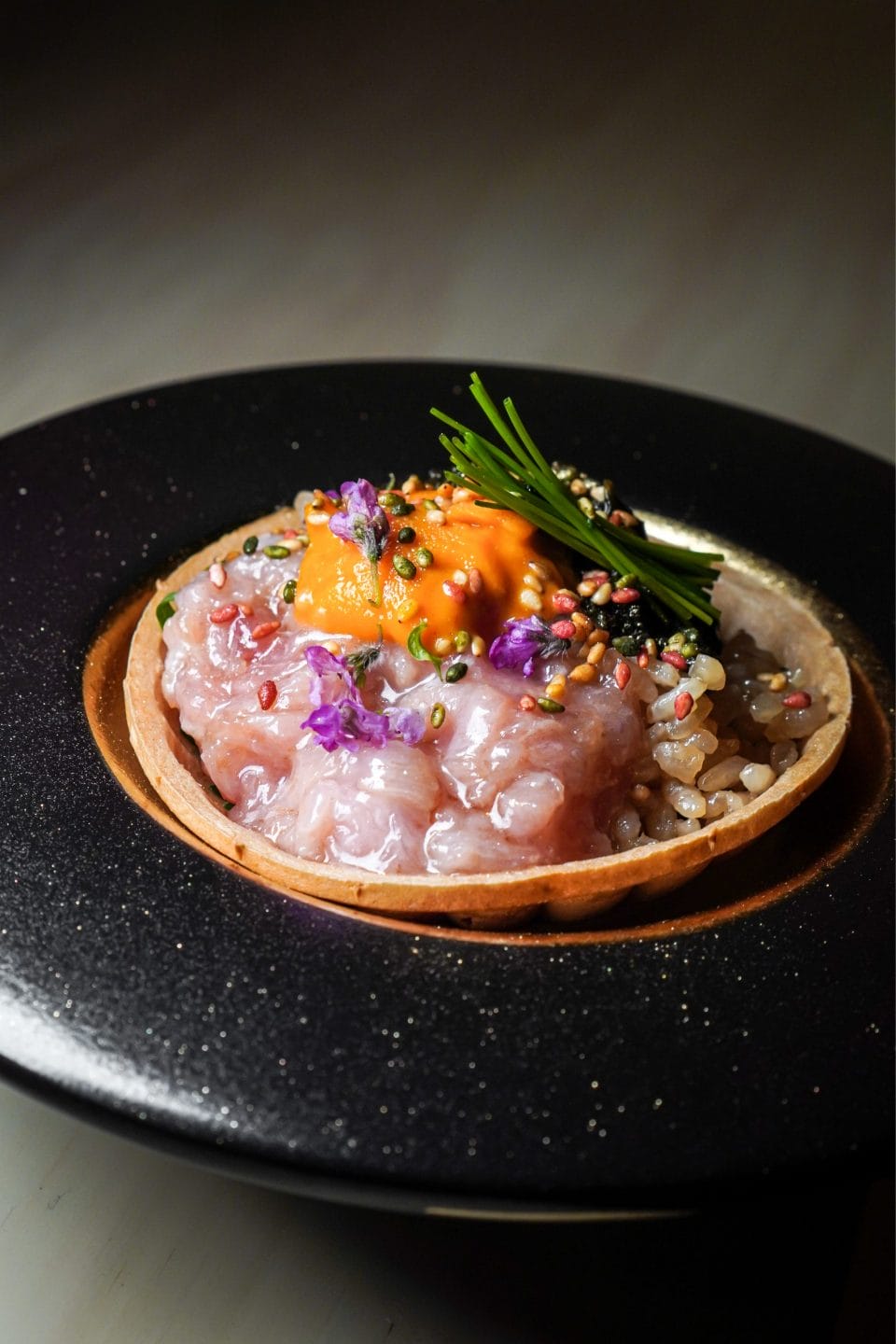 Do you think interaction between chef and customers is important to you?
Do you think interaction between chef and customers is important to you?
Yes. I’m a very curious people so I tend to open up to my customers with questions about the food or their favourite dish. I’m willing to answer any question that is thrown at me, and I will share the kind of techniques I’m preparing for the respective dishes. For example, doing a reverse aburi style for sashimi is one of the traditional ways of preparing the fish, and there are many questions on why we do it this way instead of the go-to method of grilling — where the fish is on top of the wire mesh. With the conventional way of grilling, the fish skin will stick to the wire mesh and make an unsightly presentation — which is also why I like the traditional style of doing it.
Have you noticed any specific ways in which the ambiance and space of your omakase restaurant affects the way guests perceive and appreciate the flavours and artistry of your kaiseki creations?
With space, it is important to let the customers be comfortable. This omakase restaurant is a 10-seater because if I am alone at the counter, I can entertain and explain the dishes slowly. I have worked in a 24-seater omakase with two private dining rooms which made it was difficult to entertain customers because I had to cook for and juggle between two different crowds in the respective rooms. As a paying customer, I would only want the chef’s undivided attention. Therefore, I love the layout here where I can talk to everyone with the 10-seaters.
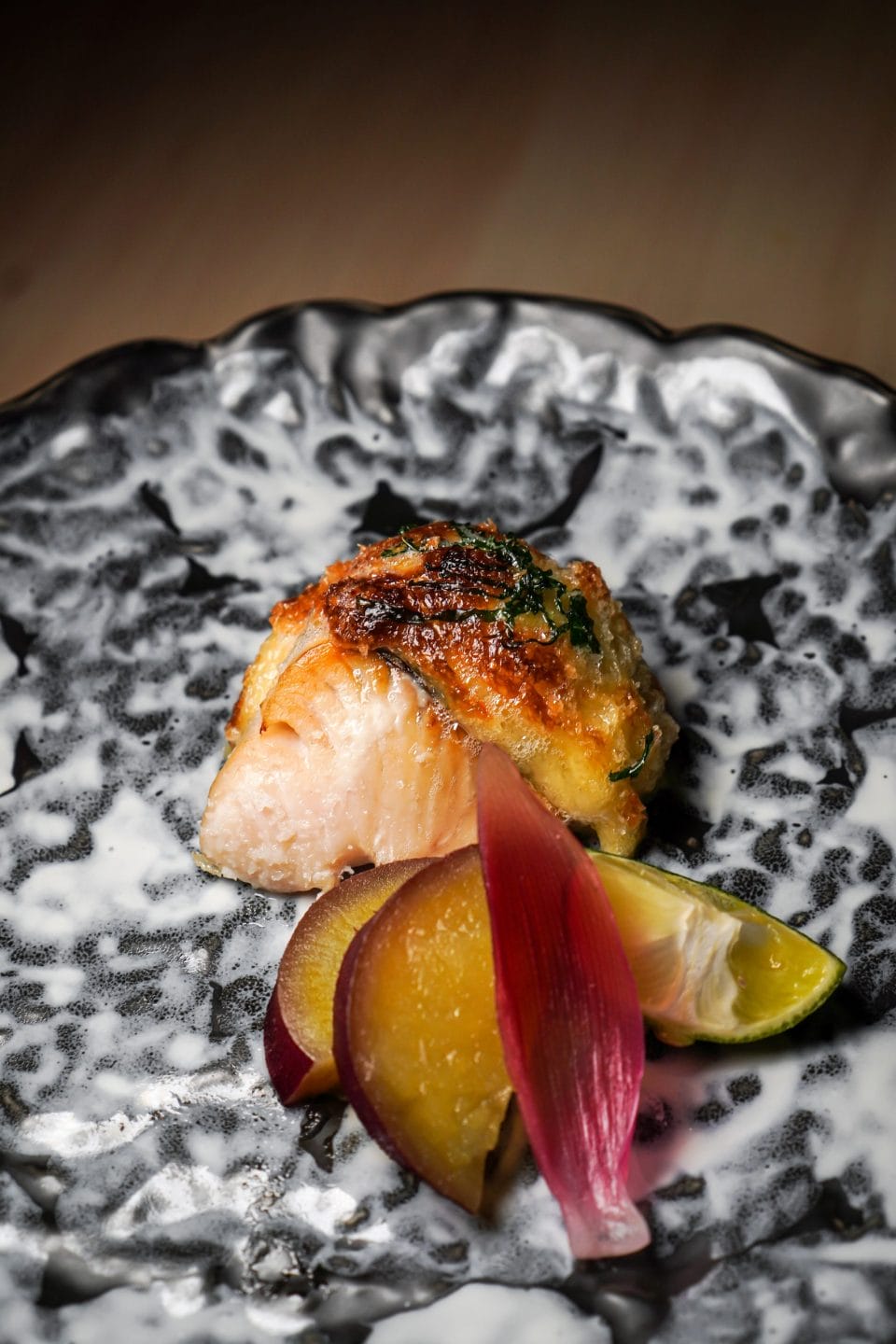 Can you describe the dining experience you aim to deliver at Ikkoten Omakase and how it sets itself apart from other Japanese restaurants?
Can you describe the dining experience you aim to deliver at Ikkoten Omakase and how it sets itself apart from other Japanese restaurants?
Entertainment, good food, and how I can explain the kinds of high quality seasonal dishes that I bring in. All our food is sourced from Japan as I have a cargo that comes in four days a week. The imports on Tuesdays and Fridays are from Tokyo while on Wednesdays and Saturdays, are from Osaka.
You seem to have the tenacity to continue with traditional Kyoto food after all these years. Why not try something entirely new instead with your experience?
Many Japanese restaurants serve fusion cuisine that incorporates flavours from the West. The original flavour of the dish’s main ingredient is lost with the other ingredients overshadowing it. This is why I have reservations about adding a Western twist with my food, because with seasonal ingredients, they already have the best flavour and I would not want to ruin it with others. For my traditional Kyoto kaiseiki omakase cuisine, I want customers to experience the original flavour before I enhance it with another ingredient such as the Japanese lime, to bring out a new flavour palette.
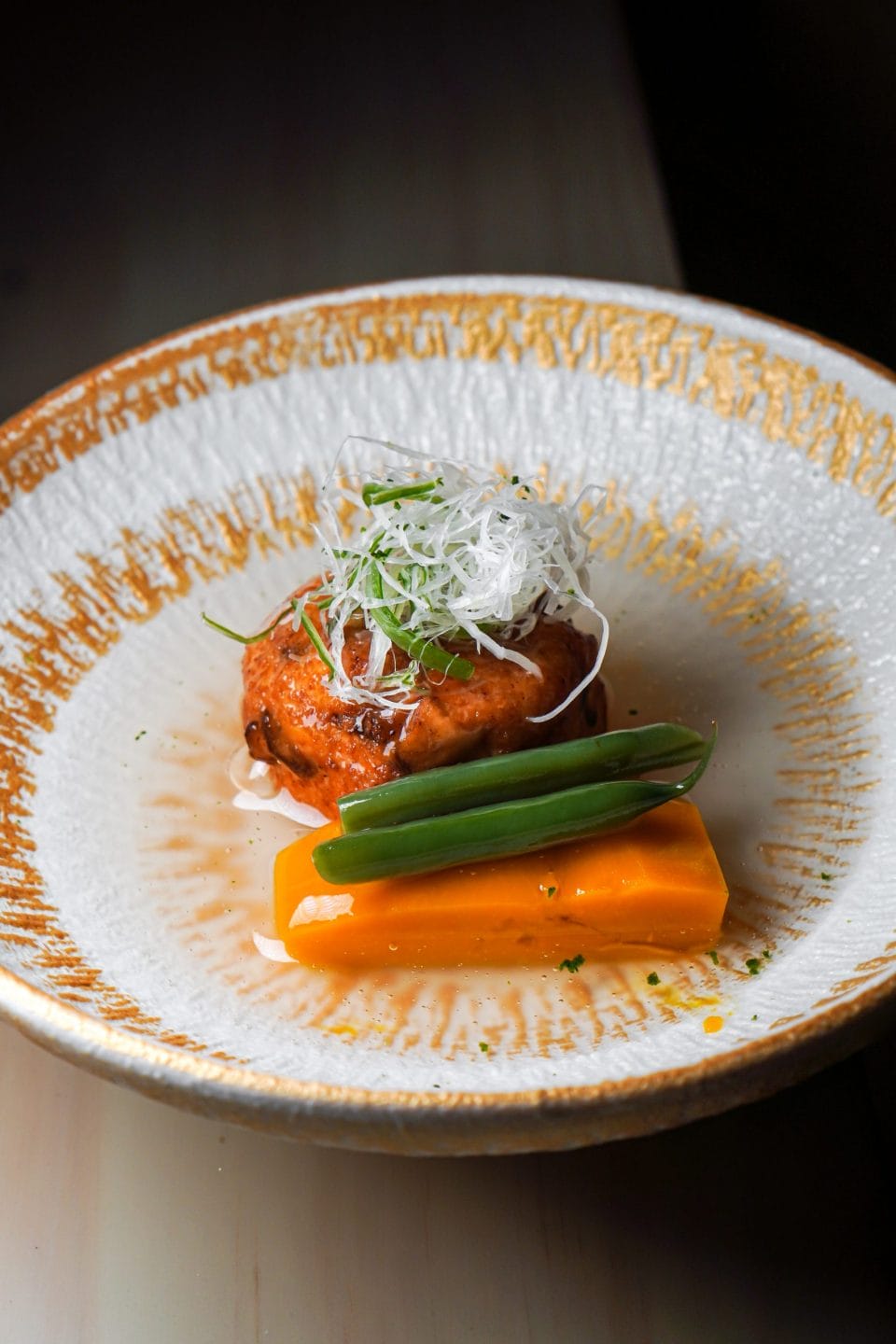
Can you describe the importance of presentation and aesthetics in Japanese cuisine, and how it enhances the overall dining experience?
Good visuals are of importance for any cuisine. The colour, texture, presentation and quality of the ingredients are the four most important factors in creating a good overall experience, aside from informing the guests the beauty and balance of each dish. The Hana course, for example is made up of a balanced mix of raw and cooked food so everyone can enjoy every dish, despite its small portions.
As someone who believes in the pursuit of knowledge, where do you seek inspiration and innovation for your culinary creations?
I will spend time studying by myself by searching up online and reading Japanese books. If something catches my eye, I will try to recreate the dish and my research and development process can take up to years.
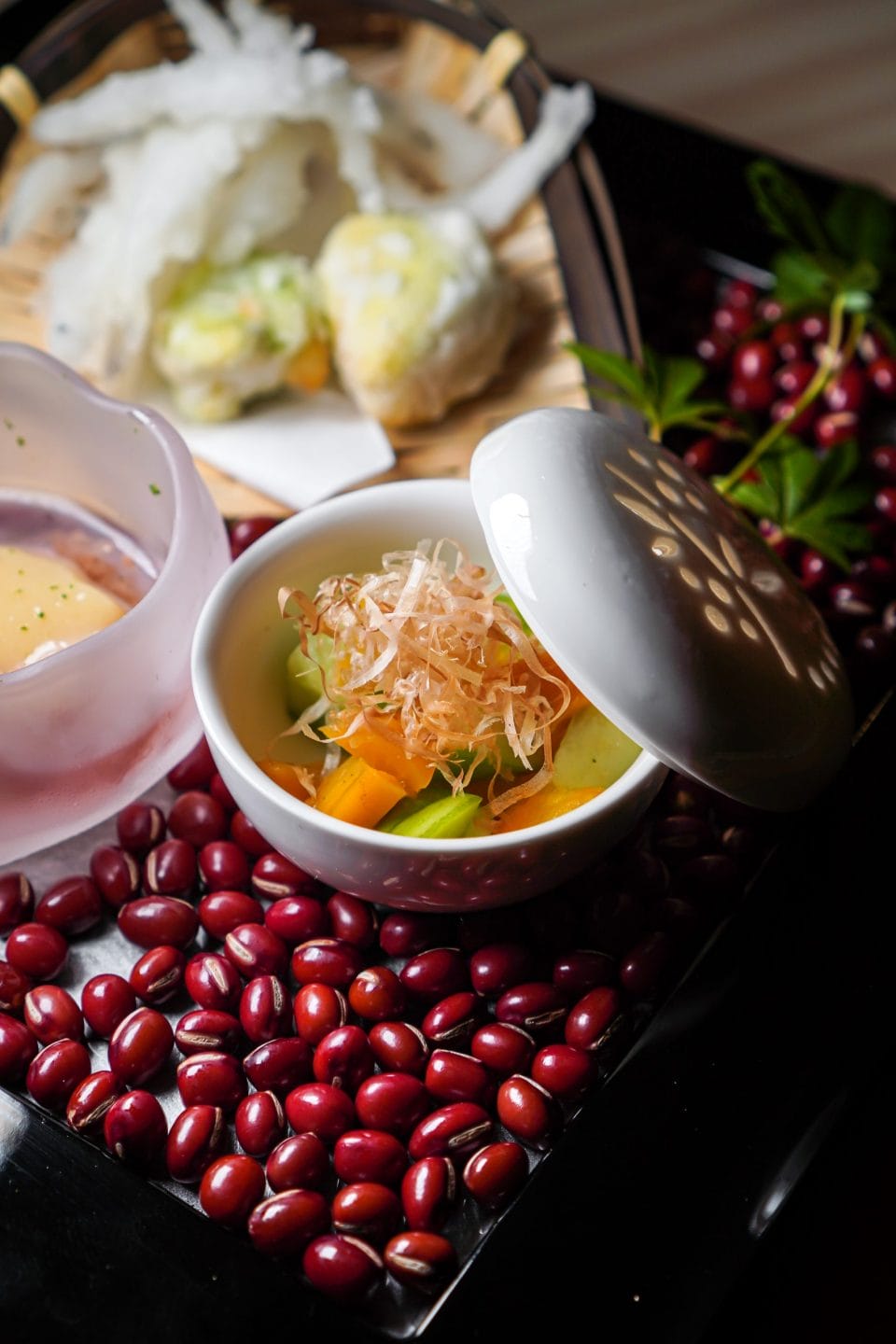
What are your future aspirations for Ikkoten Omakase, and how do you plan to continue evolving as a chef?
I want to mould my crew to be someone like me in the future. If they become a head chef at another outlet, I would be very happy because I would get to watch how someone I mentored succeed in life. I also desire greater prosperity for Ikkoten.
Once you’re done with this story on Ikkoten Omakase, catch up on our June/July 2023 issue here.


